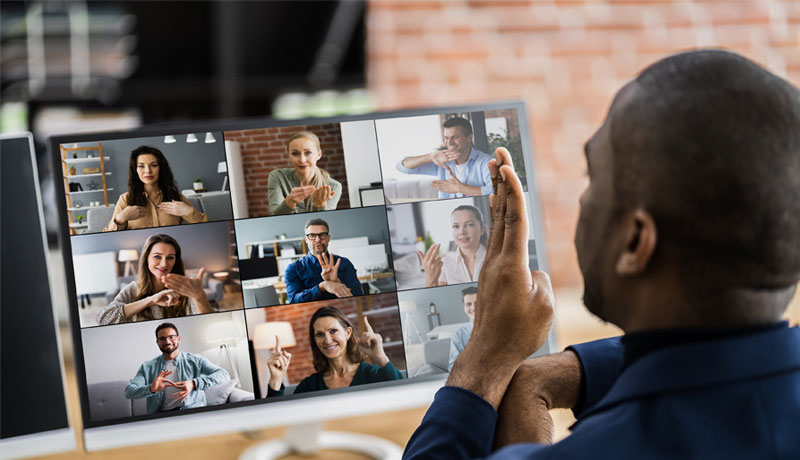
According to the latest whitepaper from Mastercard, a compassionate approach to the financial needs of people with disabilities could assist in meeting the needs of the most vulnerable members of society across the Middle East and Africa.
The study, Bridging the Disability Gap: An Opportunity to Make a Positive Impact, reveals that for people with disabilities, digital inclusion is the path to financial inclusion. Governments’ adoption and prioritization of policies to improve service accessibility paves the way for public and private sector financial institutions, mobile network operators (MNO), fintech providers, and other organizations to develop and implement solutions.
“At Mastercard, we are a purpose-driven organization and put into practice our belief in ‘doing well by doing good’. Diversity, equity, and inclusion are part of who we are, and we bring this to life by deploying products, services, and partnerships that are aligned with the 2030 Agenda for Sustainable Development and the 17 Sustainable Development Goals (SDGs), based on ‘leaving no-one behind’,” said Umar Hashmi, Vice President, Global Product and Engineering, Mastercard.
According to the most recent estimates, one billion people, or 15% of the global population, suffer from some sort of impairment, making them the world’s largest minority group. Visual, hearing, speaking, mobility, cognitive, and psychosocial problems are all examples of disability. Many people with disabilities are unable to bank freely due to a mix of physical barriers to accessing financial institutions and services.
This can include being unable to travel to and enter a financial institution, branch, or ATM, not perceiving and understanding what is written on paper or electronic devices, hearing, understanding, and communicating with banking service providers, and not being able to access paper or digital content, depending on the type of disability.
The paper includes real-life case studies of persons with disabilities having to depend on others to perform simple financial tasks. One interviewee said: “You should be able to access financial services in privacy; no one should know the details of your banking transactions, your balance, and how much you are spending.” Others spoke about how access to services digitally would make a significant difference to their financial independence.
According to data from a 2019 UN report, persons with disabilities consider 28 percent of banks in affluent countries inaccessible, and between 8 percent and 64 percent of banks in several emerging economies. At the political and corporate levels, however, steps are being taken to remedy this. The UAE has enacted a federal law protecting the rights of disabled people. Over 2,100 employees at Emirates NBD bank have received Disability Equality Training and have been taught American Sign Language.
The bank’s Disability Friendly Branch project, which began in 2016, aims to make banking easier and more convenient. Infrastructure, technology, and services are all integrated into the three-phase change to enable and improve accessibility.
In the Middle East and Africa, according to the Mastercard white paper, leveraging digital inclusion as a bridge to financial inclusion for people with disabilities requires closing the gap in smartphone ownership, mobile internet usage, and digital competence. Since the epidemic, around 63 percent of the world’s population has gone online.
Despite a huge mobile disability gap that widens at each stage of the user’s journey, research in select low- and middle-income countries in the Middle East and Africa finds that 62 percent of adults with disabilities own mobile phones and 21 percent own smartphones.
Artificial intelligence, machine learning, robots, and the internet of things are just a few of the Fourth Industrial Revolution’s developing technologies that could be delivered via applications and web-enabled services. This makes it possible to close the financial services accessibility gap.
Because a variety of variables contribute to the absence of financial access for people with disabilities, financial inclusion necessitates the development of new solutions tailored to unique use cases for each type of impairment. While solutions from global players like Mastercard have the ability to be utilised internationally, the diverse landscape of possibilities and problems across regions needs a regional strategy.
A mobile-first strategy to financial inclusion, for example, has proven successful in most of the Middle East, Africa, and South Asia. The following are some recommended solutions:
Hashmi further said that Mastercard’s Product and Engineering division takes a customer-centric approach to solving problems. Labs as a Service, for instance, hosts innovation teams working on new solutions and experiences. Using ideation and concepts, the team helps distill solutions and develop prototypes that can be tested for real-life scalable applicability.
The approach is designed to onboard as many people as possible into the digital economy. In addressing the needs of persons with disabilities, there is a clear opportunity for the industry to work collaboratively to make a positive impact on millions of lives across the world.